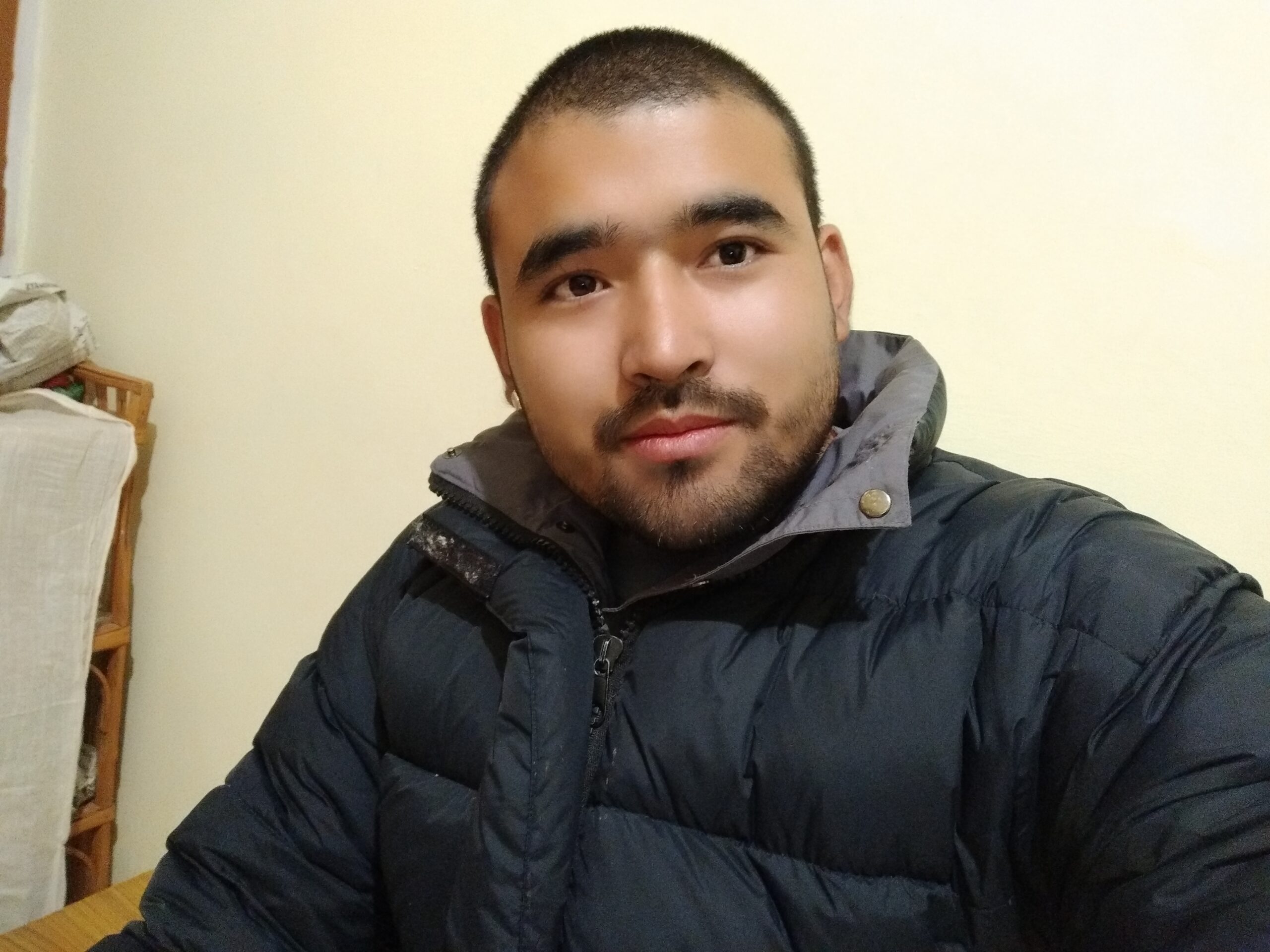
True Perception: Sacred Art of Tibet Introductory Level Thangka Art Workshop, led by Tsering Norbu
The basic idea of dharma art is the sense of peace and refreshing coolness of the absence of neurosis. We have to be genuine and gentle. Otherwise, there is no way to work with the universe at all.
—-Chogyam Trungpa Rinpoche,
from the book “True Perception”
Short Intro
Through the ancient art form from Tibet, a world of contemplative practice and sacred iconography is found by firsthand experience of drawing, painting, and crafting a thangka.
Over 7 days in Deer Park Institute in Bir, by appreciating, understanding and practicing of thangka art, we dive into the beauty of art from the Himalayas and plant a seed for further sacred arts practice as a lifelong path of inner explorations.
Language: Hindi, English, Tibetan, Chinese
Facilitator:
Tsering Norbu
from Jampae Norbu Thangka Art, Dharamsala
Introduction of Thangka Art
Thangka painting belongs to the “life and craft” group of learnings (śilpa-karma-sthāna-vidyā) from the five main subjects (Pañcavidyā) of Buddhist training. In ancient Tibet, it was made and shared strictly among monastic communities only.
What makes this dharma art relevant and still practiced today is the unique, meditative art process and its special, meritorious quality of carrying the teaching of truth in an aesthetical way that is beyond verbal words and conceptual ideas.
By sitting with pure intention and devotion in front of a canvas, starting with making a proportion grid dictated by traditional texts, the thangka painter goes through a majestic inner journey of a human’s attempt to depict and manifest some things so unfabricated, intricately deep and even unimaginable such as loving-kindness, compassion, warmheartedness, wisdom, skillful means, dignity, emptiness and ultimately truth and enlightenment, with just a brush and a few hues of colors.
The Menri Style of Thangka Art
What we are going to learn in this workshop is from an art lineage called Menri style which is the first genuine Tibetan artistic styles, established by Menla Dondrup in the mid-15th century.
Based on several textual sources, Menla Dondrup standardized a system of measurements with various classes of deities in accordance with their merits and related qualities. The system is the basis not only for the Menri tradition but also for several painting traditions developed afterwards.
Artistically more important is that by the genius of Menla Dondrup, deities painted in the Tibetan style were freed into open natural landscapes, which lifted Tibetan aesthetic taste and inaugurated the first genuine Tibetan artistic tradition.
Menla Dondrup was such a great master painter that he has been revered by the Tibetans as a manifestation of Bodhisattva Manjushri. The Menri style has evolved through centuries and developed several regional offshoots.
Today, it still remains as the dominant style of Tibetan thangka painting. The main guru Gen Migmar Tsering that taught Norbu in his 6-year training is a current lineage holder of Menri style lineage in Dharamsala passed down by his previous master Venerable Gen Sangye Yeshe.
About this Workshop
In old times Tibet, only monks painted thangkas. In modern times India, an art novice in Dharamsala needs to spend at least 6 years in a thangka school to get a guru’s permission to become a professional painter. What can we do in seven days?
In this workshop, with the help of many images and visual aids, we will be exploring the world of thangka art by practicing according to the way a student is trained traditionally which is first make proportional grids and directly go into sketching, to learn by observing and doing, without too much conceptual reasoning or historical knowledge. This is a small but important first step to understanding and practicing thangka art.
Observation, meditation, and familiarization are keys to gaining an attentive mind, smooth hands, and perfect awareness. All of the requirements for a thangka painter are the same as for a spiritual meditator, with the expression of an art process that is contemplative and contained in nature.
As a meditative state exists in one present moment beyond duality, thus a long and rigorous process of dharma art training can last for as long as lifetimes, while it can equally happen and inspire in as short as seven days time we have here together in Deer Park Institute. No prior art training/religious background required
The learning of art and craftsmanship has no limit and no end. The mutual connection and benefit between artists and for both teacher/student is vastly precious.
We hope this seven-day workshop can serve as a ground for sharing our love and way of practice for beauty and truth. The pace of the workshop is in line with the spirit of dharma art and meditation and especially follows the way how a thangka artist really works, which is with a happy mind, relaxed awareness, and detailed clarity.
The design and contents of this workshop course is also personally authorized and partly guided by the facilitators’ main thangka guru, Gen Migmar Tsering, who is the current lineage holder of Menri thangka painting in India. Gen Migmar gives his good wises to all future art students, and believes that this workshop would be beneficial to all.
We have a passion to share our pure devotion and artistic vision with who is willing to learn, and our ultimate hope is to make the sacred arts passing down to us from ancient lost world a modern-day worthwhile path of practice for everyone in cultivating wisdom and merit for the liberation of all sentient beings.
Main topics Covered
● Introduction of thangka art through actual thangka works, sketches, digital images and videos.
● Introduction to art tools: canvas, natural pigment colors, brushes, sketches and proportions, brocades.
● Making proportional grids for thangka.
● Main art themes we will explore include:
(1) Buddha’s face and figure
(2) Green Tara face and figure
(3) Wrathful deities faces and figures
(4) Flowers, natural landscapes and animals
(5) Mantras: basic writing and calligraphy in Tibetan
(6) Basic iconographical elements, auspicious symbols, etc.
(7) Basic hand smoothness training methods
● Sketching a thangka
● Lining a thangka
● Making a frame for thangka canvas(optional)
● Preparing, sewing, distempring and polishing a canvas (optional)
● Mani stone mantra: preparing stone plates and writing mantras(optional)
● Documentary screening
● Complete a thangka work: Every participant will choose his/her preferred thangka subject for a small art piece and complete it on canvas as one of the final result presentation for this workshop
● Meet a Master: a senior thangka painter will visit us for a few hours on the sixth day of the workshop and talk with us about his/her experience and inspiration, Q and A session included.(optional)(Might be an interview with a thangka master recorded in a video)
● Group exhibition among participants: Share everyone’s completed thangka art piece. We discuss what inspires the artwork, what you have learned and what you would like to explore further in the future.
Those who would want to join are people who want to:
● Make an in-depth exploration of the sacred art of Tibet
● Know how to appreciate thangka iconography, what makes a good thangka painting, how the basic artistic elements in a thangka works, and how a good thangka may benefit and bring blessings
● Understand how the visual vehicle of dharma art can convey the meaning of deep truth through nonverbal manifestations
● Practice firsthand how to start a thangka paintingfrom proportions, sketches and linings, to handmade canvas crafting, stone/sand color making and finally completing your first piece of work of thangka.
● Develop, in an artist’s way, the six good qualities for approaching truth: Dāna(generosity), Sila(discipline), Kṣānti(patience), Vīrya(joyful diligence), Dhyāna(meditative concentration), and Prajñā(wisdom)
● Explore the way of life as a practitioner of sacred arts and cultivate a path of integrated practice for future endeavors of inner explorations.
Schedule
Workshop schedule
9:00-9:10
Silent meditation and mantra chanting
9:10-10:30 Session 1
10:40-12:00 Session 2
12:00-14:00
Lunch break
14:00-15:20 Session 3
15:30-17:00 Session 4
The 7-day Course Plan
Day 1
Morning meditation
Session 1-Morning-1 Introduction and Motivation
Buddha head measurement grid
Session 2-Morning-2 Buddha head outline
Session 3-Afternoon-1 Buddha eyes and ears
Session 4-Afternoon-2 Buddha nose and lips
Evening Meditation
Homework- Make one Buddha head with grid
Day 2
Morning meditation
Session 5 Morning-1 Peaceful Deities Elements
Buddha body measurement grid
Session 6 Morning-2 Buddha body outline
Session 7 Afternoon-1 Buddha body arms and hands
Session 8 Afternoon-2 Buddha legs and feet
Evening Meditation
Homework- Make one Buddha body with grid
Day 3
Morning meditation
Session 9 Morning-1 Lotus throne 3 types, crown and aura
Session 10 Morning-2 Buddha body and lotus complete
composition
Session 11 Afternoon-1 Mantras and calligraphy basics
Session 12 Afternoon-2 Buddha robes 3 types
Night- Documentary: Institute of Tibetan Thangka Art
Homework- Mantras and Buddha robes practice
Day 4
Morning meditation
Session 13 Morning -1 Basic symbolism in thangka art, Eight auspicious signs
Session 14 Mornings-2 Green Tara head grid
Session 15 Afternoon-1 Green Tara head and face outline
Session 16 Afternoon-2 Green Tara body
Evening Meditation
Homework: Mantra practice, Green Tara practice, choose 1
from 8 auspicious signs to practice
Day 5
Morning meditation
Session 17 Morning-1 Nature element, plants and animals
the Four Harmonious Brothers
Session 18 Morning-2 Green Tara body and cloth
Session 19 Afternoon-1 Wrathful and semi-wrathful Deities:
fire, dorje, sharp nails, hairs, trident, skulls, etc.
Session 20 Afternoon-2 Chakna Dorje, Six Arms Mahakala, Guru Rinpoche and Palden Lhamo basics
Evening Meditation
Night–Video clips of thangka making process, photo slideshow
Day 6
Morning meditation
Session 21 Morning-1 Thangka compositions, varieties, thon- drol, one-day thangka, etc. Basic materials: colors, canvas, brushes, frames, brocades
Session 22 Morning-2 Chenrezig elements:
folded palms,flower and mala
Session 23 Afternoon-1 Mani stone: choose a stone/paper
Session 24 Afternoon-2 Complete a work of mantra calligraphy
Evening Meditation
Homework: Choose and complete a work from the past 6 days
Prepare to present a work for group appreciation on Day 7
Day 7
Morning meditation
Session 25 Morning 1 Thangka appreciation:
What makes a good thangka?
How to choose a deity?
Tibetan Astrology and Art
How to start a thangka of your own
Session 26 Morning 2-Review and share: choose a work from the past 6 days and share it with classmates
Session 27 Afternoon 1-Meet a senior thangka master
Session 28 Afternoon 2-Closing Remarks
Dedication of merit
Tsering Norbu (1992- ), Ladakh.
Tsering Norbu was born and raised in a remote village called Kushta (a happy place)in Padder area of
Ladakh, Jammu and Kashmir, India. From 2001 to 2013, Norbu was ordained and educated as a novice monk and had his first contact with the beauty of Buddhist wall paintings. With a heartfelt aspiration to get a formal training in Buddhist art, he arrived at Institute of Tibetan Thangka Art (ITTA, est. 1977) in Dharamsala and became a disciple under the seats of Menri lineage’s main thangka master Gen Migmar Tsering and second master Gen Tenzin Ngodup. After a 6-year traditional and rigorous training in ITTA thangka school, he graduated in 2018 with blessings from his masters to become an independent thangka painter. Now Norbu gets commissions from monasteries in Dharamsala and individual orders around the world.
